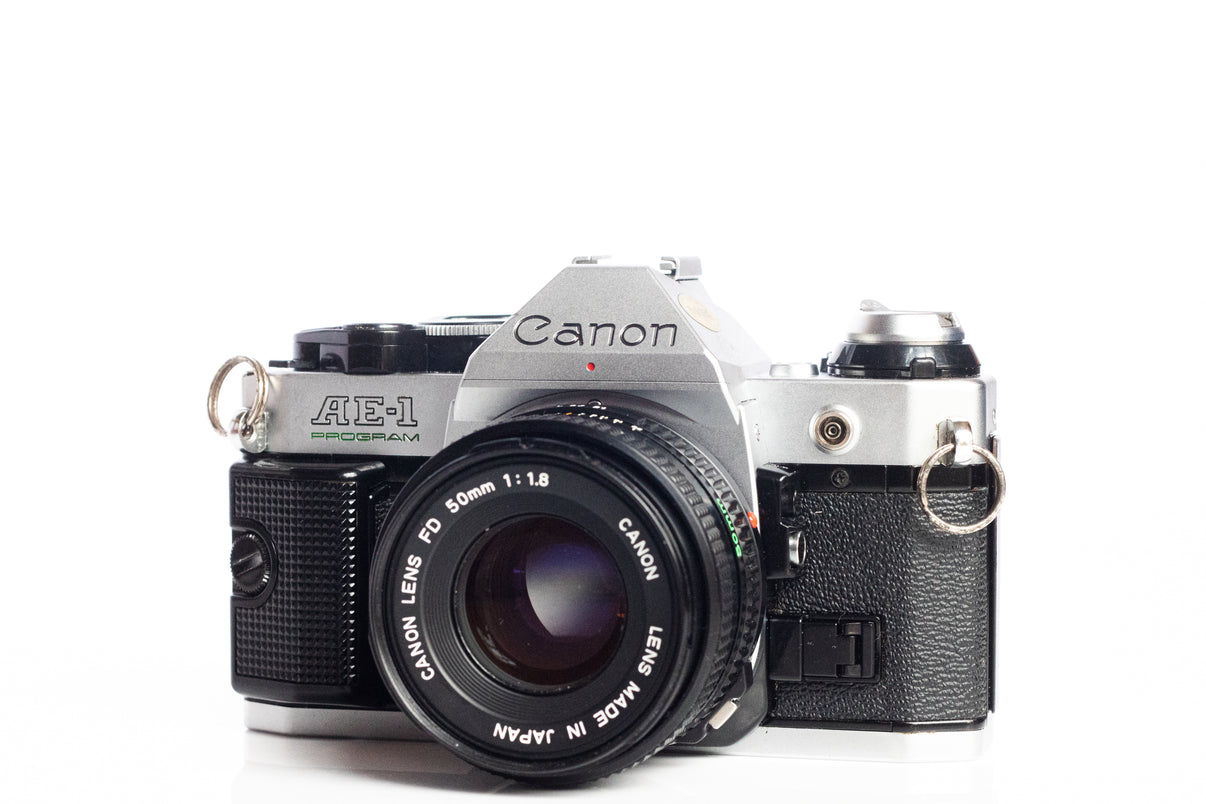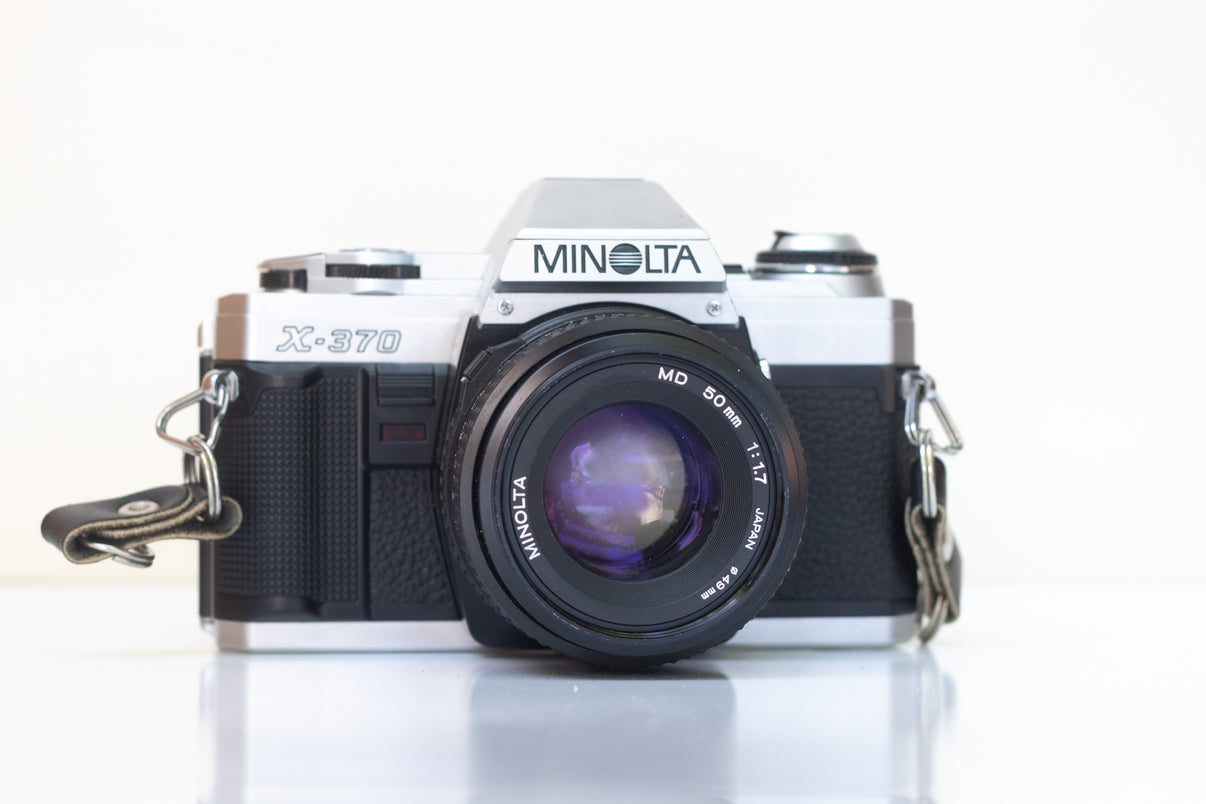
Best Beginner Film Camera! 5 Cameras to Start off Your Film Photography Journey. 35mm SLR Cameras to learn film photography
Share
At all the camera stores I have ever worked at we always had one most common question- "I am new to photography, what camera should I start out with?" Some were students coming in for a class. Some were hobbyists. Some were just people who saw how good film can look and wanted to try to learn.
My first question to them was always, do you want to take photos for fun and not think about it, or do you want to learn the basics of film photography? If you answer the latter then keep on reading! But if you just want a fun camera to shoot with your friends and not think about all the photography mumbo jumbo what you are looking for is a point and shoot! I wrote a short blog post about that as well!
Anyways, here are five cameras that are good for beginners and will naturally teach you the ropes of film photography! The first 4 our 35mm and the last is 120 or "medium format" (not as daunting as some would think!)
TIP: If you are buying these NOT from a reputable selling (ahem, like me!) make sure you buy ones that are TESTED, WORKING, sold in WORKING condition, and have GOOD light seals (and no canon squeak). Feel free to send me ebay listings if you need suggestions! But I can not stress how many times people buy cameras from me because they bought two off eBay and they were broken, if you can afford it - buy from a reputable seller that refurbishes them, its worth it.
Here is the list shortly if you don't want to read!
Canon AE-1 Non Program (150-300
Canon AE-1 Program (160-300)
Minolta X-370 (120-250)
Pentax K1000 (100-300)
Yashica Mat 124G (400-700)
Canon AE-1 Non Program (150-300)
Canon AE-1 (non program) is a pretty legendary 35mm SLR camera. It is easy to use, it works well and is reliable, and it takes great photos. It has a light meter so you can learn the basics with ease. Because it lacks a program mode I would put it at my highest suggestion. The light meter will help you choose settings and the lack of program mode will stop you from relying on the camera doing all the work.
Pros:
- Manual controls promote learning the fundamentals of photography.
- Built-in light meter assists with exposure settings.
- Reliability and durability are commendable.
- Wide availability of lenses and accessories.
Cons:
- Lack of program mode may be daunting for absolute beginners.
- Limited automation compared to modern cameras.
Canon AE-1 Program (160-300)

For those who prefer a more automated experience without sacrificing quality, the Canon AE-1 Program is an excellent choice. Building upon the success of its predecessor, the AE-1 Program retains the iconic design and durability while introducing a program mode for added convenience. This mode automatically sets both aperture and shutter speed, making it perfect for beginners who may feel overwhelmed by manual controls. However, the camera still offers manual override, allowing users to fine-tune settings as they gain confidence and experience. I will warn you if you want to learn the program may be hard to not rely on!
Pros:
- Program mode offers convenient automatic exposure settings.
- Retains the sturdy build and reliability of the AE-1.
- Compatible with a vast array of Canon FD lenses.
- Ideal for beginners transitioning from point-and-shoot cameras.
Cons:
- Limited manual control compared to non-program models.
Minolta X-370 (120-250)

The Minolta X-370 is another classic 35mm SLR camera favored by minolta lovers but a little underrated in terms of general beginner cameras. It has aperture-priority mode which is nice and a bit of an advancement from the Canons. The X-370 simplifies the shooting process while offering enough manual control to foster learning and experimentation. Its lightweight design and ergonomic layout make it comfortable to handle, ideal for extended shooting sessions. Lots of MD lenses to choose from as well.
Pros:
- Aperture-priority mode simplifies exposure control.
- Well built for comfortable shooting.
- Compatibility with Minolta MD lenses (lots of em!)
- Offers a balance between automation and manual control.
Cons:
- Relatively limited availability of accessories compared to other brands.
- Build quality may not be as robust as some other models. (some people say these cameras aren't as strong or well built, harder to repair as well)
Pentax K1000 (100-300)
Regarded as one of the most straightforward and reliable film cameras ever made, the Pentax K1000 is a favorite among photography instructors and students. Its all-mechanical design means it operates entirely without batteries, making it incredibly dependable in any shooting conditions. The K1000's simple layout and intuitive controls make it easy for beginners to grasp the basics of exposure and composition, while its rugged construction ensures longevity. With a Pentax K1000 in hand, aspiring photographers can focus on honing their skills without distractions. I don't LOVE the k1000, it is nice it is purely mechanical- but how hard is it to carry around 1 3 dollar battery? The light meter goes out a lot, the layout is eh, and then shutter is known to slow down with age. I understand why it is a great student camera but I would choose a canon over it anyday.
Pros:
- All-mechanical design ensures reliability in any conditions.
- Simple and intuitive controls are ideal for beginners.
- Legendary reputation for durability and longevity.
Cons:
- Lack of advanced features may limit creative possibilities.
- Light meters often broken.
Yashica Mat 124G (400-700)

For those intrigued by the world of medium format photography, the Yashica Mat 124G offers an excellent entry point. This twin-lens reflex (TLR) camera produces square 6x6cm negatives, resulting in stunning image quality and rich detail. While it may seem intimidating at first glance, the Yashica Mat 124G's fully manual operation encourages users to slow down and carefully compose each shot. Its waist-level viewfinder provides a beautiful way to shoot.
I learned on a yashica mat 124 and it was great. I don't think it has to be intimidating as people think. I will say though medium format you only get around 15 shots! So it is less forgiving in that sense. However medium format film is a bit cheaper.
Pros:
- Produces high-quality medium format images with rich detail.
- Fully manual operation encourages thoughtful composition.
- Waist-level viewfinder offers a unique shooting experience.
- Solid construction and timeless design.
Cons:
- Bulky and heavy compared to 35mm cameras. (but light compared to other medium format!)
- Learning curve for operating a twin-lens reflex camera. (not much I promise!)
